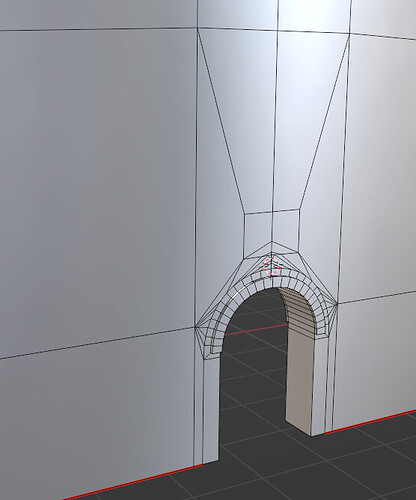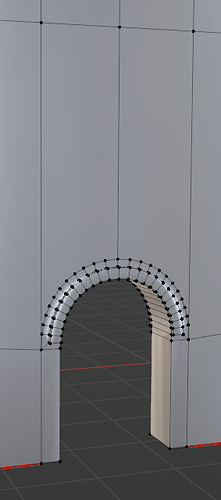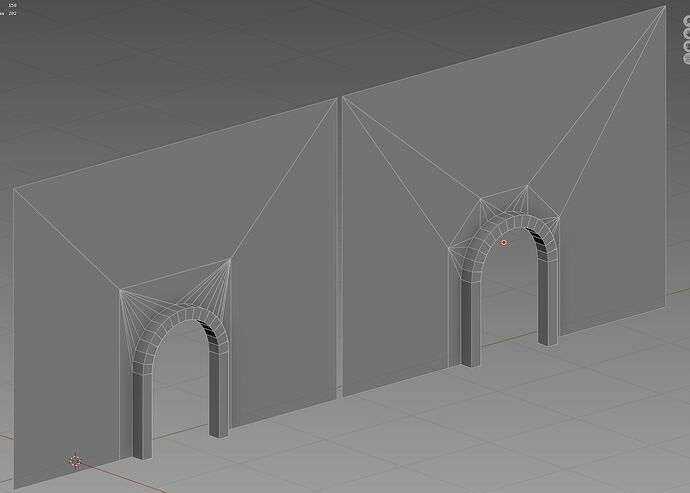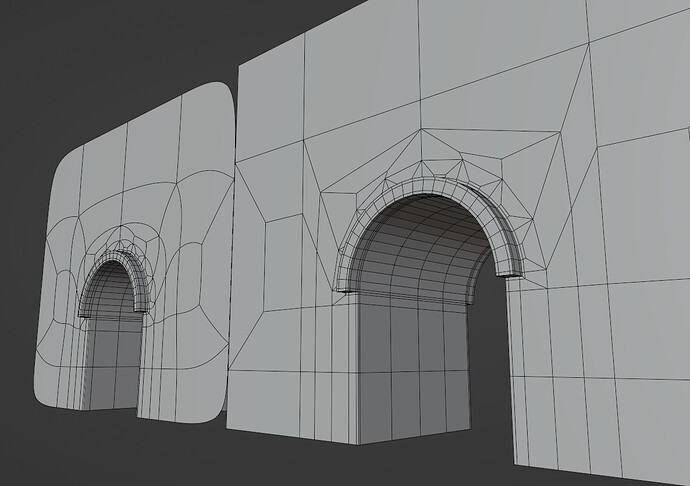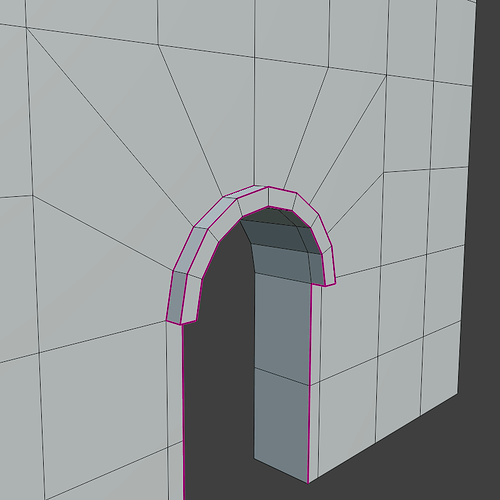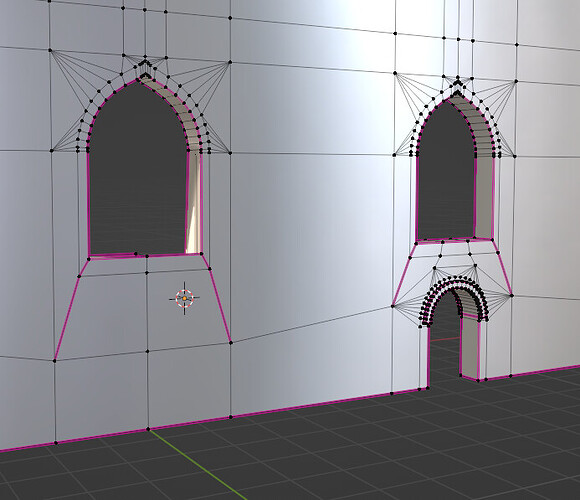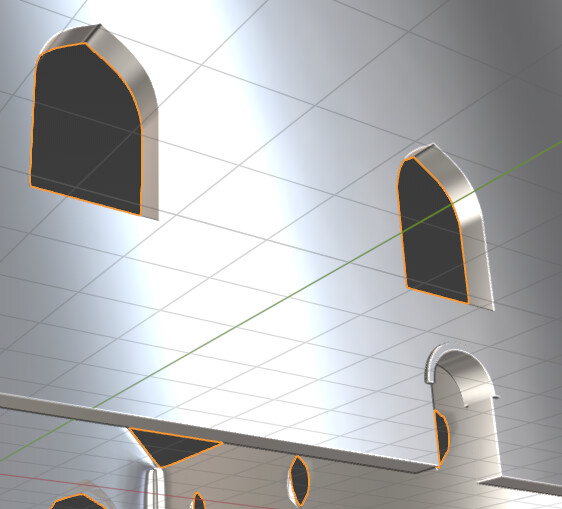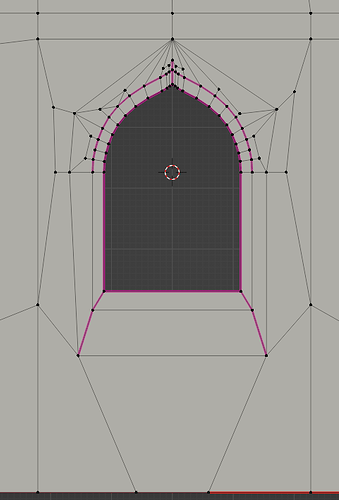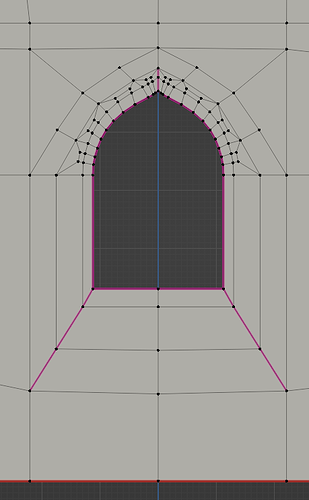What are anyone’s thoughts on my topology here? Worth the extra effort or am I just over complicating it?
Is it going to deform? If not, it’s not worth the extra effort. Non-deforming objects can use ngons. Is it going to be animated with deformation? Worth the extra effort, but in this case, your topology is actually terrible for animation, this won’t deform well at all. You have tons of long thin triangles- for animation, you want roughly square quads
Thanks for the feedback. In this case it won’t deform but I was trying to figure out the best way to keep good edge flows more as an exercise on topology. It is actually all quads (not even any tri’s) but not sure how I could make them more square? Do you have any suggestions?
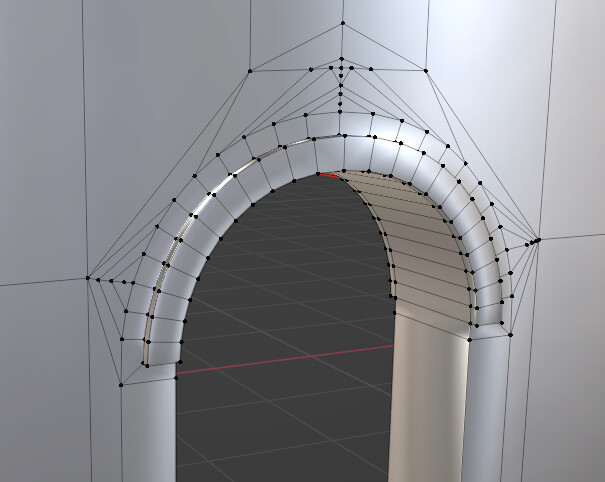
It’s a good idea to clean up messy vertices.
It can look bumpy.

See the link below for a topology lecture ![]()
https://www.youtube.com/@Motionworks/videos
Ouch. Im afraid basically those topo doesnt make any sense. Overcomplicated? Yes. A lot, actually.
Theres no needs for rerouting edges if its not for subdiv or pipeline with bevel modifiers.
Rerouting sometimes are worth the effort for video game models in some cases, because of specific moments on how GPU are rasterizing triangles, but i guess its not a game model.
If you ask me i would say this is too far the other way for sure, cause now we have an big ngon. Its not guaranteed what we will get any troubles in the future because of that, but its possible.
I would do it as in the first option, or probably, the second one if i would make it for video games purposes and try to avoid long thin triangles which noticeable in first version:
Perhaps you simply haven’t gone overboard enough. ![]() Here’s one (still not quite ideal) sub-d take on the topo.
Here’s one (still not quite ideal) sub-d take on the topo.
From what’s been said I’m uncertain as to the goals of the model. But if it’s all-quads, minimal 3-5 poles only, “good” topology, I’d go with something like this:
The edges marked in red have their Crease weight on 1.0, so Subsurface won’t soften them – this allows for a much lower initial polycount around the arch. Loop-reducing topology is unlikely to lower the polycount more than it adds, but that depends on what’s needed elsewhere on the model.
Does it have to be connected at all? Why not just make the arch/door a separate object? It will be easier to texture that way anyway.
Thanks for all the feedback and input everyone. Really appreciated, I’ll play around a bit more with all these ideas.
Ok, so going with the topo style SoundDifferent suggested I end up with this:
Which I think is looking pretty good. I’ve got subsurf and bevel (in that order) modifiers on the mesh.
Also just to answer some questions on the application of this model, apart from just trying to practice some modeling and learn, I’m hoping to put it up on some stores which is why I wanted to try get the best topology I could.
Good topology depends on end use – for example, game models use trigons exclusively and are as low-poly as feasible. Animated models need topology that can be rigged to move with sufficient realism for the genre. Even still models shouldn’t have topological issues that can cause rendering artifacts (flipped normals, doubled geometry, visible poling, etc).
If the end use is unknown (“to put it up on some stores”), what makes topology “good” is versatility. “Good” all-quads topology (no poles less than 3 or greater than 5, no poles on creased, tightly curved, or transition-between-flat-&-curved areas, even-as-feasible polygon distribution, loops follow function, etc) is considered by many to be best not only because it maintains ease of use when modeling, but because afterwards it’s the easiest to convert to the widest possible range of uses.
The poling style you’re showing in that is common in game modeling, where the renderers are optimized to handle game conditions to the exclusion of all else. Outside of that, it’s usually considered bad topological practice, and would require many who buy it to do a bunch of retopologizing.
Ok, here’s another 2 ideas inspired by @cjgladback’s reply.
I’d really appreciate any further thoughts.
Two thoughts: you’re spending a lot more time on this than is necessary, and you’re not really moving in a good direction. As said, you need to decide if this is a game model, a sculpting model, an animation model, and then figure out your topology. As it stands, you kind of have game topology, but not really. Stop doing random topology and decide what the purpose of this model is, so you have a direction to move in
The reason I am spending so much time on this is because I’m trying to wrap my head around good topology and how to achieve it. Like I said the goal is for use as an asset so a versatile use as @KickAir_8P put it.
Perhaps the thing I’m getting caught up with here is how to best handle the relatively dense geometry on the arches. I’m trying to avoid wrapping the entire building in loops/contain them around the window itself. At the same time I’m trying to keep the model easy to modify further (eg. add more edge loops).
The problem is, that’s not really an option here. Right now, you’re doing game topology, which is useless for sculpting, for example. You can’t really “do it all”, “use as an asset” isn’t specific enough to guide your work here
Ok, so what would I need to do differently for creating an asset to use in a scene. So the model itself wouldn’t need to deform but just as a setting for an animated scene.
In that case, I’d use a Boolean to cut it out and not worry about the ngons
Weirdly enough that’s how I started this model ![]()
If I can ask then for sculpting, what would I need to do differently? would it be more around and even spread of the geometry and less about the loops?
